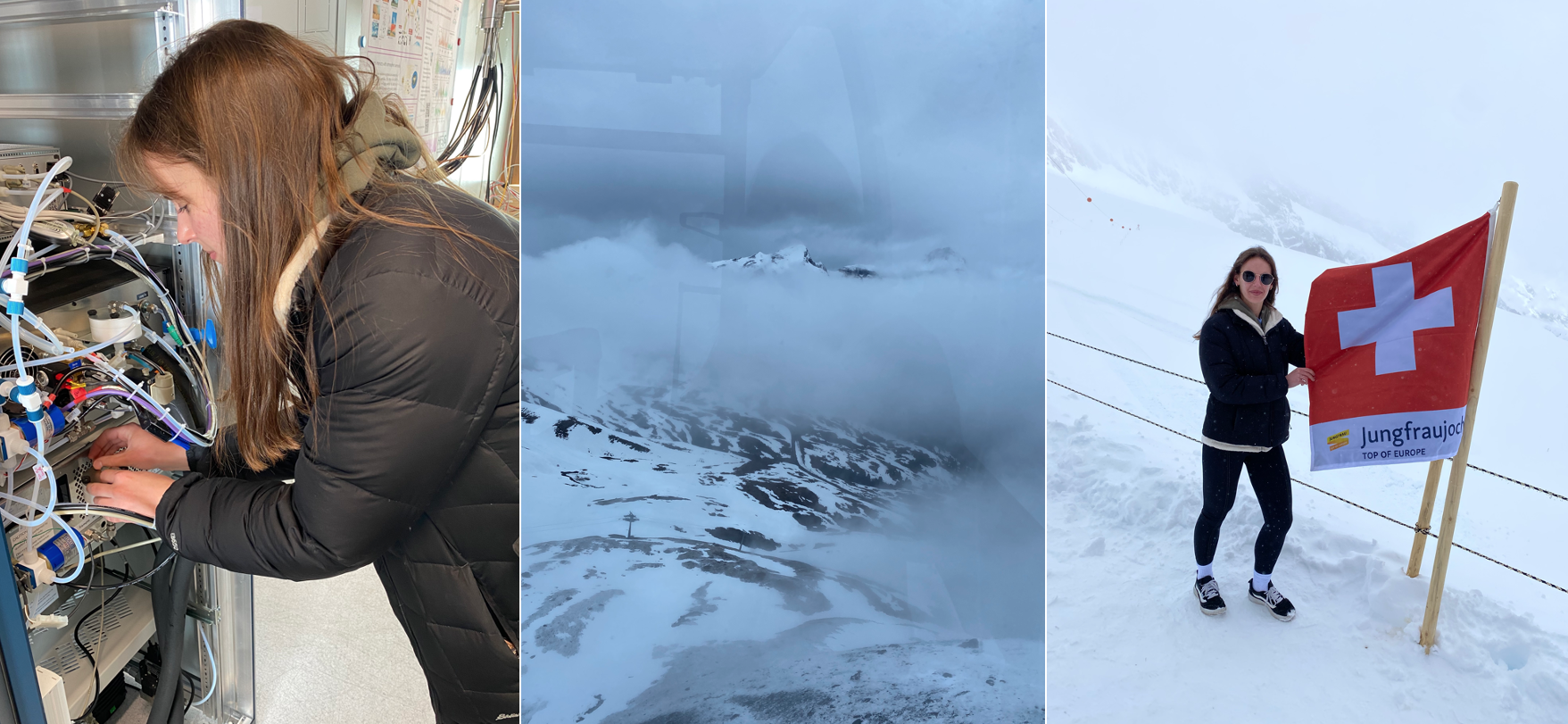Helen Kenion, recipient of the 2023 Secondment Program award, has completed the program and wrote the following to share with the FLUXNET community:
This past April I traveled to Zürich, Switzerland, for a six-week secondment at Empa, a Swiss federal lab, working with Dr. Dominik Brunner. My PhD research is focused on testing alternative methods to estimate local-scale greenhouse gas emissions from mole fraction measurements in urban environments using eddy covariance measurements for evaluation. Zürich’s CO2 monitoring network (part of ICOS Cities), unlike many other urban networks, consists of a large quantity of mid- to low-cost sensors rather than a smaller number of high-precision sensors. Working with measurements from this network allowed me to test methods to estimate emissions with mid-cost sensors that, in previous work, I’ve already tested using high-precision sensors. The use of lower-cost instrumentation to estimate local-scale emissions could improve the spatial resolution of emissions estimation in cities. High spatial resolution emissions information in cities is hard to achieve with current methodologies, but is extremely useful in emissions mitigation planning and evaluation.
Working on this project, I calculated local flux estimates at 22 mid-cost sensor sites in Zürich. I compared my results to eddy covariance measurements at one site and evaluated the others by looking at temporal trends and changes with wind direction. I also used a co-located mid-cost sensor with eddy covariance instrumentation to evaluate the ability of the mid-cost sensors to capture fluctuations in CO2 concentrations. Results have been promising for the application of this method with mid-cost sensors so far, and because my next steps are data-driven, I will be able to continue this work in the US and use these results towards my PhD dissertation. My next step will include a comparison of these estimated fluxes with human-activity based emissions estimates in Zürich.
During my secondment, I also got to learn about other work at Empa besides my research project. I even had the opportunity to travel to Jungfraujoch to assist with maintenance on air quality and greenhouse gas monitoring instrumentation. The Jungfraujoch site is situated on a mountain in the Alps at an altitude of over 11,000 feet, and with this high elevation, it can be used to monitor air quality and trace gases in the free troposphere. Visiting this site was a very special experience!
In addition to my work at Empa, I also had the opportunity to collaborate with Dr. Stavros Stagakis at University of Basel. I traveled to Basel, Switzerland, twice during my secondment to see the urban eddy covariance site on the University of Basel campus and I got to experiment with data from this site as well. This heavily instrumented site provided a great test of how urban eddy covariance sites can be affected by flow distortion from buildings.
Through this secondment I was able to continue my research in a direction I otherwise would not have been able to, working towards methods to achieve high-resolution urban emissions information that is crucial to planning and evaluation of anthropogenic emissions mitigation. This was a great way to make professional connections with international colleagues and learn about the work of other groups in my field. I am very thankful to FLUXNET for this incredible opportunity, and to my colleagues at Empa and University of Basel, from whom I learned a lot about urban emissions monitoring.

Left: Instrument maintenance at Jungfraujoch. Middle: View from the cable car on the way up to the Jungfraujoch site. Right: Outside the Jungfraujoch site.

Left: Photo of the river taken in downtown Basel. Right: Zürich downtown.
